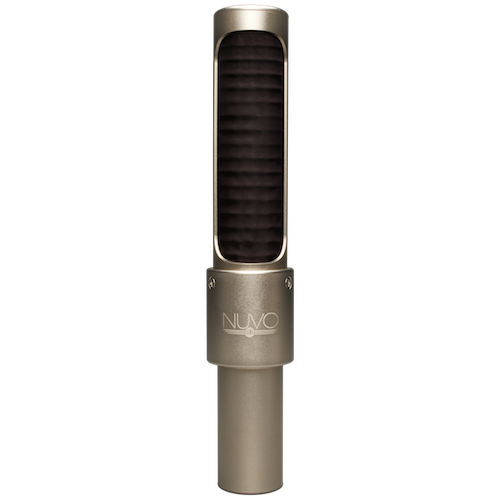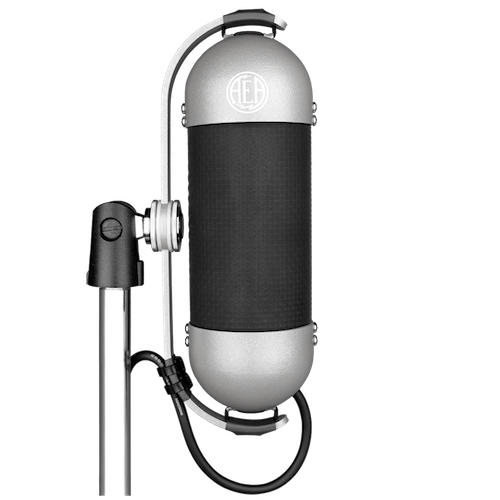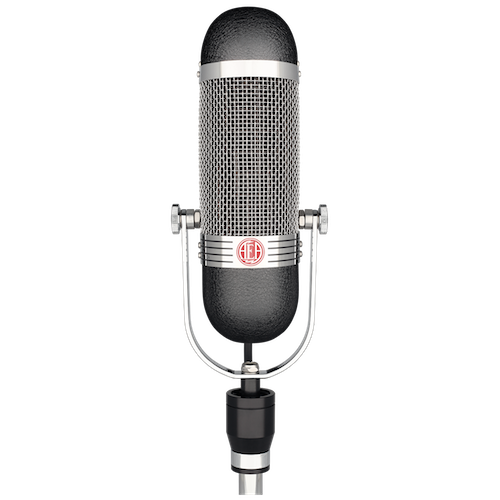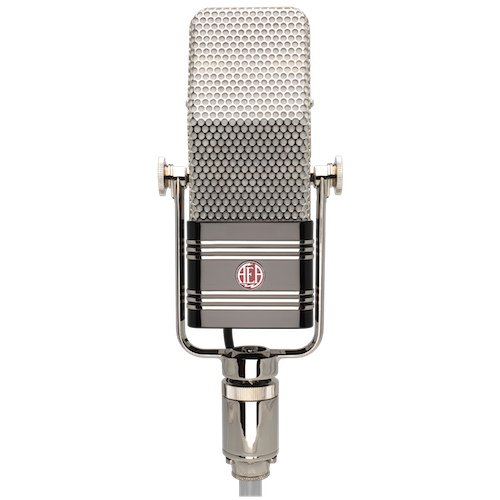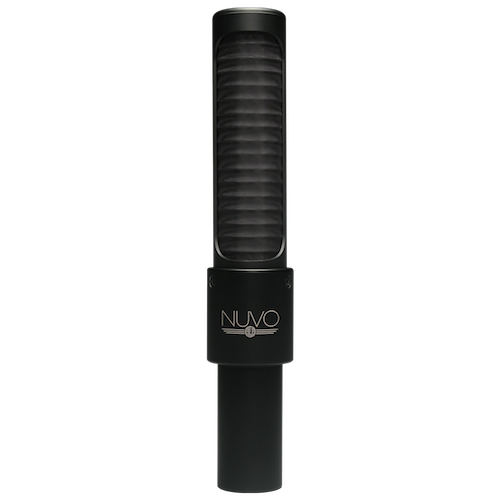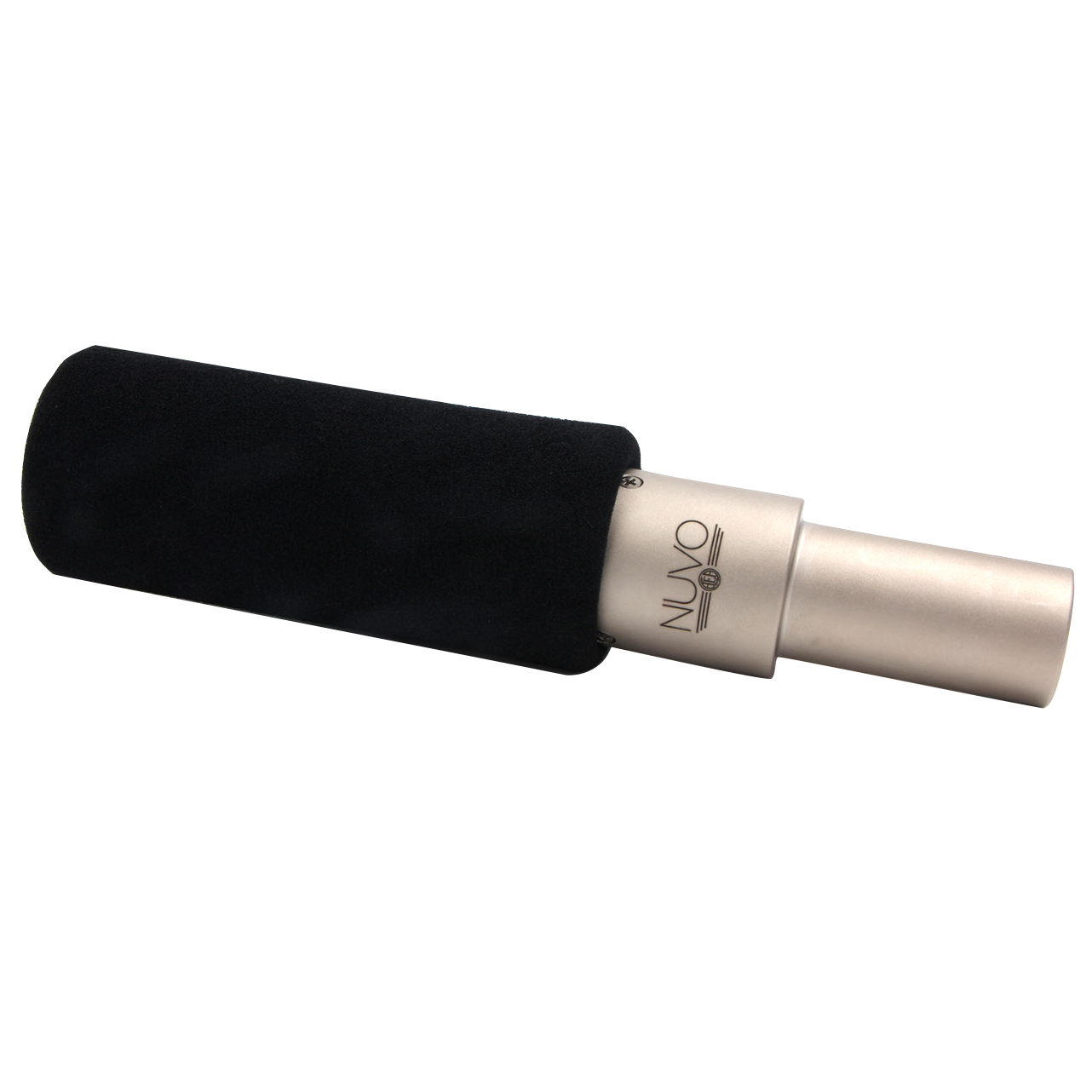In today’s studios, ribbon microphones have become the leading choice when engineers seek to capture the full detail and character of guitar and bass amps. Ribbon mics accentuate desired tonal details while softening the less-flattering, harsher frequencies that can complicate a mix.
Common Techniques
When positioning a ribbon mic on an amp, there are a few options to consider. First, try orienting the mic facing the amp straight-on. Depending on how close or far you position the mic from the amp, this standard technique will often produce the most accurate, balanced frequency response.
If you find that the proximity effect of the microphone creates too much low-end, try angling the mic so that the ribbon is no longer parallel to the amp face. This will temper the low-end proximity effect, while still retaining the extended top-end of an AEA ribbon. This change in angle also prevents damage from the air blasts produced when plugging or unplugging instruments from the amp.
Another option to capture different tones than the straight-on position would is an off-axis position. This position can capture the varied tones produced by different areas of a speaker cone.
Different Mics For Different Results
NUVO N22
Proximity effect is inherent in every ribbon microphone. It’s a highly useful feature for engineers who depend on ribbons to deliver warmth and smoothness to their tracks. The distance at which proximity effect is present varies with each AEA microphone. For instance, the proximity effect of the NUVO N22 is present when recording a source from closer than two inches, while that of the R84 series microphones is present from 18 inches and closer.

The NUVO N22 is a highly effective microphone for capturing the full frequency range of an amp, highs and lows included. When positioned two inches from the amp’s grill, the N22 delivers low-end proximity effect other microphones can’t, while also capturing the high-end frequencies that one would expect from an SM57.
The N22’s modern construction and design lend it incredible durability previously thought unattainable by traditional ribbon production. It is rugged enough to survive touring and other live settings. The N22 is not susceptible to damage by loud sound sources like bass amps and can handle 141+dB SPL at 1 kHz.
R44 & R84 Series Mics
Legendary musician and engineer, Les Paul, relied almost exclusively on the RCA 44 to record anything and everything, amps included. An R44 recording an amp at close-range will create unexpected, larger-than-life sounds while positioning it afar will incorporate immense ambience to deliver a complete sonic image of an amp in the context of a room. AEA’s R84 series ribbon microphones are a terrific choice to impart the same classic tone of the R44 with less proximity effect and at a lower price point.
The R92
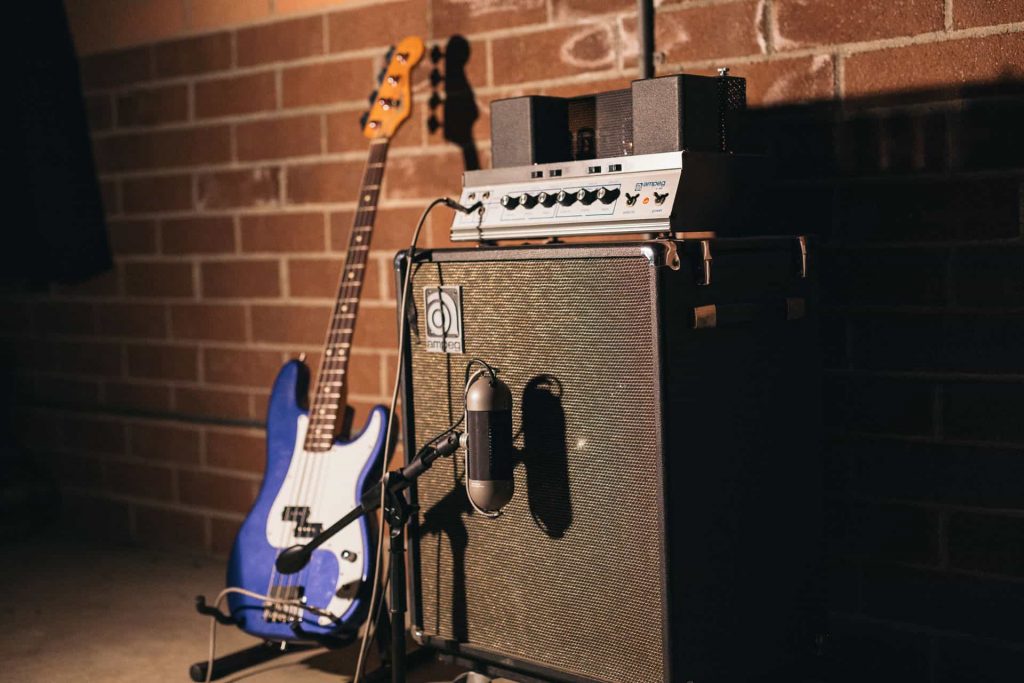
The R92, with less proximity effect than the R84, is the ribbon of choice for musicians like Ryan Adams and Jack White when they record their guitar amps. Similar in application to the N22, the R92 is effective at close-range recording, though it produces a ribbon sound more traditional than that of the N22.
A Wealth of Options
Amps love ribbons and it’s mutual. No matter the direction in which you take it, a ribbon mic on an amp will produce unparalleled results.
